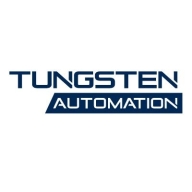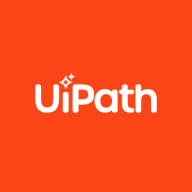


Tungsten RPA and UiPath Platform are strong contenders in the automation category, with UiPath Platform holding an edge due to its extensive feature set, flexible deployment options, and community support, justifying its higher cost compared to Tungsten RPA's competitive pricing and integration strengths.
Features: Tungsten RPA provides robust integration capabilities, including Kofax TotalAgility for process management, reliable OCR functionalities, and effective web browser automation. UiPath Platform offers comprehensive end-to-end automation solutions, AI-enhanced tools, a vast activity library, and user-friendly drag-and-drop functionality. Its Orchestrator and UiPath Academy support are particularly beneficial for non-technical users.
Room for Improvement: Tungsten RPA could improve AI integration, Java application compatibility, and desktop automation features. Initiatives to enhance support responsiveness and user perception of RPA's benefits are desirable. UiPath Platform faces challenges with its complex licensing and pricing transparency, stability issues post-update, and room for enhanced AI capabilities and better documentation for new features.
Ease of Deployment and Customer Service: Tungsten RPA mainly operates on-premises with satisfactory technical support, although delays can occur with complex issues. UiPath Platform offers diverse deployment options, including public, private, and hybrid clouds, praised for flexibility. Its customer support and community resources are strong, though the licensing process can be cumbersome.
Pricing and ROI: Tungsten RPA offers cost-effective upfront licensing suitable for large-scale automation, especially in the government sector, offering good ROI without incurred ongoing costs. UiPath Platform, while expensive due to a subscription model, provides substantial ROI through its extensive functionality and operational efficiencies. Its Community edition lowers the initial barrier, though pricing complexity remains a concern. Both platforms offer significant ROI depending on specific needs and strategies.
Fortra's Automate has effectively replaced the workload of an entire employee, saving us significant time and money.
It has reduced our expenditures in terms of purchasing more products and employing more technicians.
I've seen a good return on investment with Automate, as it streamlines processes and improves my productivity.
It has saved about 20% to 30% of costs.
We have seen a 100% return on investment.
UiPath has reduced human error and saved employee time.
They don't always understand the processes I'm trying to implement.
I would rate the technical support as a nine out of ten because it is quite fast and courteous.
They are very responsive and have been able to resolve any issues I have encountered.
They were very helpful, addressing the issue in three hours.
Even though they are external, I can ping them on Slack and I get a response right away, so they really make it very accessible to be in touch.
He works through whatever unique internal environment scenarios we have to overcome to make sure that it's doing exactly what we need, even though we're constantly having new security measures to implement on top of it.
The scalability of Automate also scores a ten out of ten.
It is easy to increase one bot or one studio without needing to buy another orchestrator, which can be quite expensive.
Automate is stable for my needs and is highly scalable, allowing the same workflow to serve numerous tasks effectively.
The solution is capable of scaling with just a few clicks.
The scalability of the UiPath Platform rates a ten out of ten.
From a technical standpoint, it's essential to make the right technical decisions and design a scalable solution.
The stability of the solution is a ten out of ten.
It has very robust features, and it is not prone to instability.
The stability of Fortra's Automate is excellent.
Overall, there was only one instance of downtime in four years, which did not create any significant impact.
I have not experienced any downtime, crashes, or performance issues.
Over six years, we have created zero support cases with UiPath.
This is a significant concern, especially with critical workloads where visibility into errors is essential.
I would prefer not having to log in to update a ticket; being able to respond via email would be beneficial.
Integration with Amazon S3 is somewhat lacking.
Adding more AI could help in small tasks that require intelligence or machine learning, leading to the next stage of automation.
If the UI changes or a label is changed, sometimes the whole flow breaks.
Regarding additional functionality for UiPath, I believe that additional features will only come into play when you start talking to the customers, accept feedback, and work on it.
Competitors are often more expensive than Automate.
It offered what we wanted at a good, competitive price.
It does a lot but also costs a lot.
Most of the UiPath products are priced higher than competitors.
The cost can be a barrier in Hungary, making it difficult for me to persuade others to invest, especially when unattended robots come at a significant price point.
When compared to competition, such as Microsoft's Power Automate platform or IBM Cloud Pak, UiPath is expensive.
Automate's non-reliance on additional orchestrators makes it quite cost-effective.
In my opinion, the best feature Automate offers is the scheduling.
Automate's compatibility with existing IT infrastructure has impacted our business operations positively by providing smooth integration with other software that we use, such as Gmail, Jira, and Microsoft 365 apps, which gives us a unified platform instead of having to keep switching from one software to another, saving a lot of time and streamlining the whole workflows.
The tool has a noticeable ROI, and the investment is worth every penny as it reduces tedious tasks and improves scalability.
Our use of automation sped up the process of getting paid from insurance companies, saving us substantial amounts of money.
Whenever they release a product, they also release a course in UiPath Academy. So, you can get familiarized with the product and understand the new capabilities.
| Product | Market Share (%) |
|---|---|
| UiPath Platform | 17.9% |
| Automate | 2.0% |
| Tungsten RPA | 2.1% |
| Other | 78.0% |



| Company Size | Count |
|---|---|
| Small Business | 18 |
| Midsize Enterprise | 8 |
| Large Enterprise | 5 |
| Company Size | Count |
|---|---|
| Small Business | 11 |
| Midsize Enterprise | 1 |
| Large Enterprise | 18 |
| Company Size | Count |
|---|---|
| Small Business | 240 |
| Midsize Enterprise | 144 |
| Large Enterprise | 661 |
Automate offers a user-friendly solution with a drag-and-drop interface for efficient task automation and integration with major platforms like SAP and Azure, making it ideal for quick deployment with minimal coding and training.
Automate provides powerful features for businesses seeking efficient automation, offering compatibility with databases, email integration, and cloud platforms. Its simple interface supports both beginners and experienced users, simplifying tasks like invoice processing, HR automation, and data transformation. Cost-effective pricing and flexible licensing enhance its appeal while integration capabilities and scheduling tools ensure smooth workflow automation.
What are Automate's Key Features?In industries such as healthcare, banking, and logistics, Automate is used for tasks like invoice payment automation, data transformation, and task automation. This leads to streamlined processes and reduced manual workload, illustrating its value in enhancing operational efficiency through diversified workflows.
UiPath Platform is appreciated for its user-friendly interface and extensive automation capabilities, offering seamless integration with diverse applications. Its intuitive drag-and-drop functionality enables users to design efficient workflows with minimal technical expertise.
UiPath Platform delivers a robust set of features that enhance automation and productivity. With components like Orchestrator, task management is optimized, facilitating better scalability. Users benefit from advanced AI and document understanding tools, boosting data handling accuracy and reducing errors. Despite its strengths, UiPath faces challenges with upgrading processes, AI enhancements, and user documentation. Integration and selector sensitivity issues, along with support and licensing complexities, highlight areas for potential improvement. Users request smoother deployment, error handling, and migration processes. Enhanced support for RHEL/Ubuntu, LINQ, and Lambda and improved real-time insights, automation recording, and scheduling are desired. Streamlining the experience for non-technical users with simplified workflows remains a priority.
What are the key features of UiPath Platform?UiPath Platform is widely implemented across sectors such as finance, healthcare, insurance, HR, IT, and supply chain to automate repetitive business tasks. Common uses include automating data entry, invoice processing, document management, report generation, and customer service operations. Organizations value the platform's ability to integrate seamlessly with systems like SAP, CRM, and Oracle, allowing for enhanced efficiency and accuracy in processing both structured and unstructured data.
We monitor all Robotic Process Automation (RPA) reviews to prevent fraudulent reviews and keep review quality high. We do not post reviews by company employees or direct competitors. We validate each review for authenticity via cross-reference with LinkedIn, and personal follow-up with the reviewer when necessary.